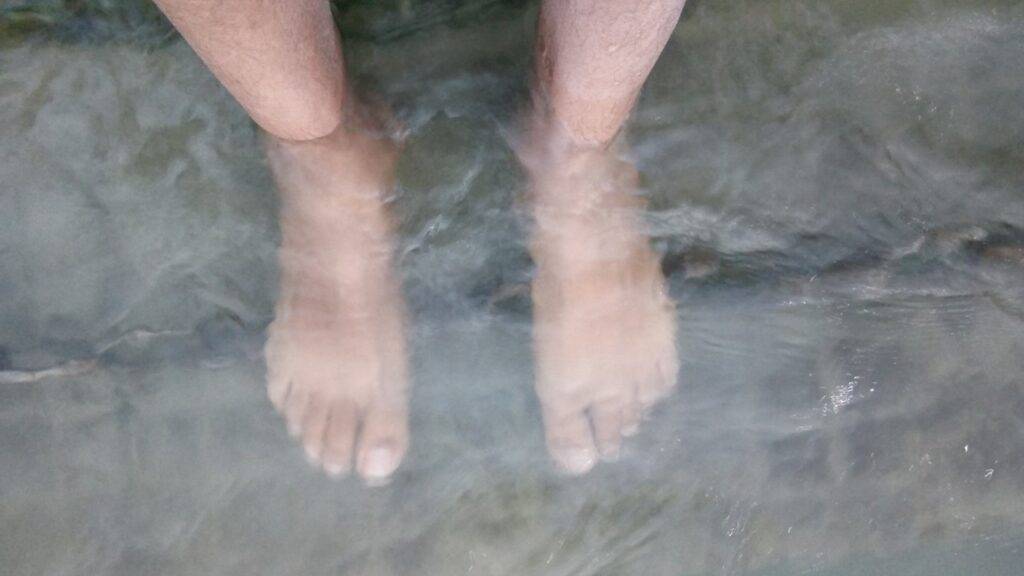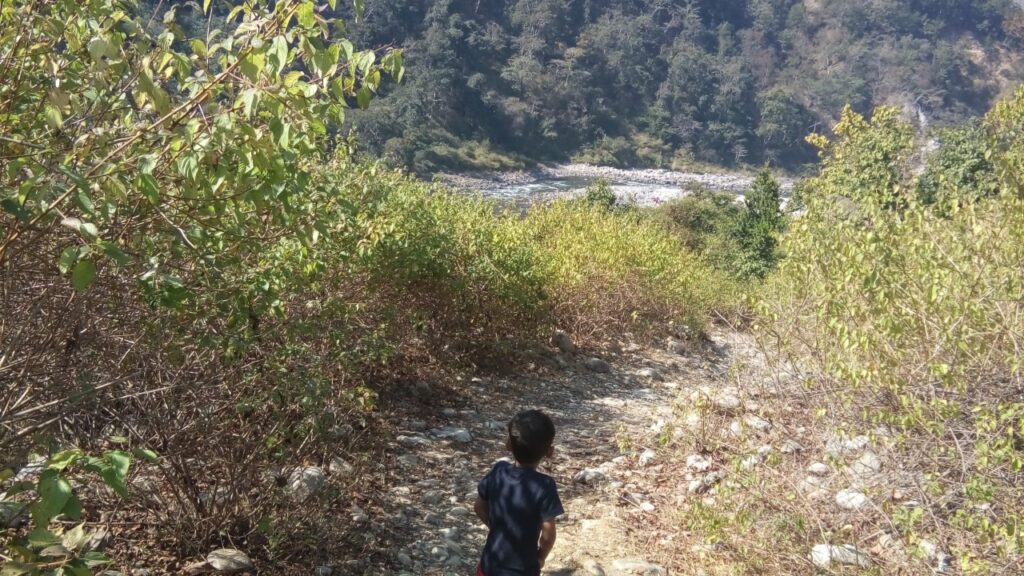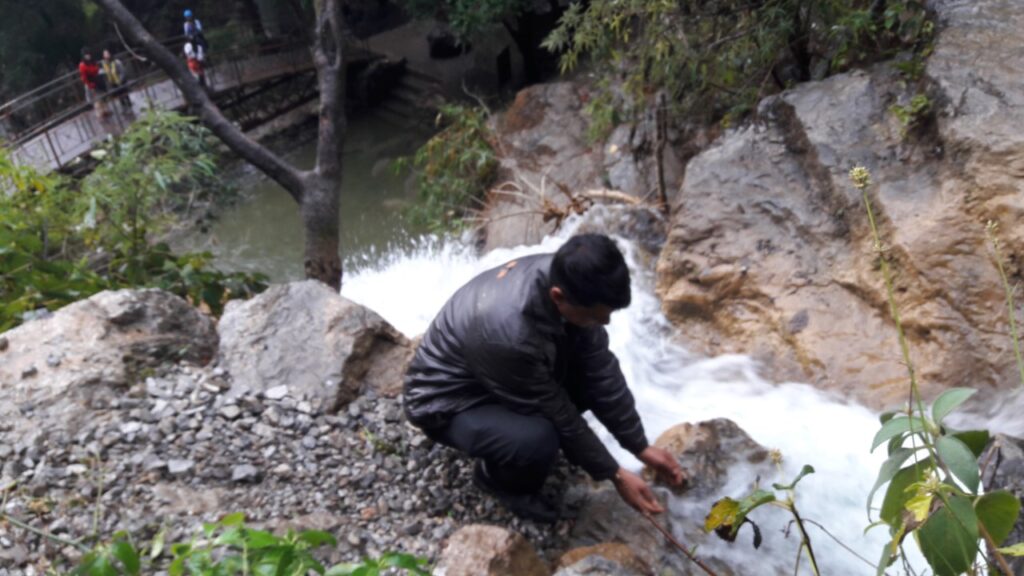In today’s busy world, finding peace in nature is vital for our well-being. One such practice gaining recognition for its remarkable healing effects is “forest bathing” or Shinrin-Yoku, a Japanese concept that involves immersing oneself in a forest environment. The idea may sound simplistic, but there’s a wealth of scientific evidence supporting the profound healing power of forest bathing. This article explains the science behind this therapeutic practice and explores recent literature that highlights its benefits.
The Science of Forest Bathing

Forest bathing, also known as Shinrin-yoku, is a practice that involves spending time in a forest or other natural environment and immersing oneself in the sights, sounds, and smells of nature. The idea is to slow down, be present in the moment, and connect with nature on a deeper level. The practice originated in Japan in the 1980s and has since gained popularity around the world. While the healing power of forest bathing has been known anecdotally for centuries, recent scientific research has begun to shed light on the physiological and psychological mechanisms behind these benefits.
1. Stress Reduction
One of the key ways that forest bathing benefits our health is by reducing stress. Stress has become an epidemic in our society, contributing to various physical and mental health issues. When we’re exposed to stress, our bodies release a hormone called cortisol (a stress hormone). High levels of cortisol can have negative effects on our health, including increased blood pressure, decreased immune function, and impaired cognitive function. A study published in the Proceedings of the National Academy of Sciences showed that a leisurely walk in a forested environment can reduce cortisol levels and lower blood pressure significantly which can help to reduce feelings of stress and anxiety.
2. Immune System Boost
Another way that forest bathing benefits our health is by boosting our immune system. Our immune systems play a vital role in protecting us from diseases. When we’re exposed to natural environments, we’re exposed to a variety of microorganisms, including bacteria, fungi, and viruses. While some of these microorganisms can be harmful, many of them are beneficial to our health. Exposure to these microorganisms can help to strengthen our immune system and protect us against illness and disease. In addition, it enhances natural killer cell activity, which helps the body combat viruses and cancer cells. A research article in the International Journal of Immunopathology and Pharmacology reported that forest therapy can significantly increase the production of anti-cancer proteins.
3. Mood Enhancement
Mental health issues like depression and anxiety are widespread, and nature can be a powerful ally in managing them. A recent study conducted at Stanford University found that a 90-minute walk in a natural setting, such as a forest, reduced activity in the part of the brain associated with rumination (repetitive negative thoughts) and improved mood. This is possible through positive psychological conditions in addition to physiological ones. Therefore, spending time in nature significantly improves mood and increases feelings of happiness and well-being. In addition, forest bathing has also been shown to increase creativity and improve cognitive function.
4. Improved Sleep Quality
Many individuals struggle with sleep disturbances. Recent research has shown that forest bathing can significantly improve sleep quality. The possible mechanism behind the improvement of sleep quality is the increase in the level of salivary melatonin with exposure to natural light and darkness. Melatonin is a hormone that regulates sleep-wake cycles and is produced by the pineal gland in the brain.
A recent study found that the effect of improving sleep through a single day of forest bathing seems to be more related to the improvement of sleep quality than the change in sleep time or the increase in sleep duration. This suggests that exposure to nature, such as through forest bathing, may help improve the quality of sleep by regulating the production of melatonin and promoting relaxation.
5. Decreased Symptoms of ADHD
Attention Deficit Hyperactivity Disorder (ADHD) is a neurodevelopmental disorder that affects many children and adults. A study published in the journal Environmental Health and Preventive Medicine demonstrated that forest therapy can reduce the symptoms of ADHD and improve the attention spans of children with the condition.
6. Lower Blood Pressure
Forest bathing can significantly lower blood pressure, which can help to reduce the risk of heart disease and stroke. Several factors may contribute to the blood pressure regulation. For example decrease in the levels of stress hormones such as adrenaline and noradrenaline with natural environmental exposure. This may help to reduce the physiological stress response and promote relaxation. This in turn can lead to lower blood pressure.
Moreover, exposure to the forest environment may help to balance the sympathetic and parasympathetic branches of the autonomic nervous system, leading to a reduction in blood pressure. In addition, forest bathing often involves walking or other forms of physical activity. This can have a positive impact on cardiovascular health. Regular exercise has been shown to lower blood pressure and reduce the risk of hypertension. Therefore, forest bathing can be a promising preventive or therapeutic measure for hypertension.
Global Status of Forest Bathing
Forest bathing is gaining global attention. Various studies and programs in countries such as the United States, Canada, and European nations have shown promising results in reducing stress, improving mental health, and enhancing overall well-being.
Japan, where forest bathing originated, has been actively promoting it as a form of preventative healthcare. In 2021, the Japanese government allocated over $4 million to boost forest therapy programs across the country, recognizing its potential to reduce healthcare costs by preventing illness and promoting well-being.
South Korea opened its National Forest Therapy Center in 2020, offering specialized forest therapy programs for various health conditions. In its first year of operation, the centre reported that 96% of participants experienced improved physical and mental health, and 88% reported a reduction in stress levels.
How does forest bathing work?

Exposure to nature can reduce the activity of the sympathetic nervous system, which is responsible for the “fight or flight” response to stress. This, in turn, can increase parasympathetic nervous system activity, which promotes relaxation and calmness. In addition, it can help us disconnect from technology and the pressures of daily life, allowing us to focus on the present moment and appreciate the beauty of nature. This mindfulness practice can reduce rumination and negative thinking, which are common contributors to anxiety and depression. If you’re interested in trying forest bathing, here are some tips to get started:
- Find a natural setting that appeals to you, such as a forest, park, or beach. It’s important to choose a location that is safe and accessible, and that you feel comfortable in.
- Leave your phone and other distractions behind. This is a time to disconnect from technology and focus on the present moment.
- Take a slow and mindful walk, paying attention to your senses and surroundings. Notice the colours, textures, and smells of the natural environment. Listen to the sounds of the birds and the wind in the trees.
- Engage in activities that connect you with nature, such as birdwatching, tree-hugging, or simply sitting and observing. You might also try practising breathing exercises or meditation.
- Breathe deeply and focus on the present moment, letting go of worries and stressors.
Remember, forest medicine is not a one-time cure for mental health issues. It’s a practice that requires regular and consistent engagement to see lasting benefits. Therefore, the healing power of forest bathing depends on the quality and quantity incorporated into daily life.
How to incorporate forest medicine into daily life?

In a busy schedule and lack of money, it’s not always easy for many people to take forest baths. Therefore it is important to incorporate forest medicine into daily life. By incorporating more time in nature into your daily life, you can improve your physical and mental health, reduce stress, and boost your overall well-being. Remember, green spaces are positively correlated with health. Therefore, regular exposure to forest bathing can boost the healing power. So why not give forest medicine a try and see how it can benefit you?
- Take a walk in the park: Even a short walk in a nearby park or nature reserve can help you feel more relaxed and refreshed. Try to find a quiet spot where you can sit and enjoy the sounds of nature.
- Immersing yourself in nature: Use all five senses to connect with the environment. Try to find a quiet spot in the woods where you can sit and listen to the sounds of the forest, smell the fresh air, and feel the sun on your skin.
- Start a garden: Gardening is a great way to connect with nature and get some exercise at the same time. Even if you don’t have a space, you can start a small garden or grow some vegetables at home.
- Plan a camping trip: Spending a few days in the great outdoors can be a great way to recharge your batteries and get away from the stresses of daily life. Try to find a quiet spot where you can enjoy the peace of nature.
- Increased creativity: Spending time in nature can significantly increase creativity and improve cognitive function. Thus, more creativity which involves natural interactions will boost health by improving physiological and psychological conditions.
Conclusion
The healing power of forest bathing is rooted in centuries-old traditions and supported by modern scientific research, which has the incredible ability to heal the mind and body. As the world continues to grapple with the challenges of everyday living, taking time to immerse oneself in the soothing embrace of the forest may be one of the most potent forms of natural medicine available to us.
So, the next time you find yourself in need of rejuvenation and healing, consider stepping into the forest and allowing its therapeutic magic to work wonders on your well-being.

